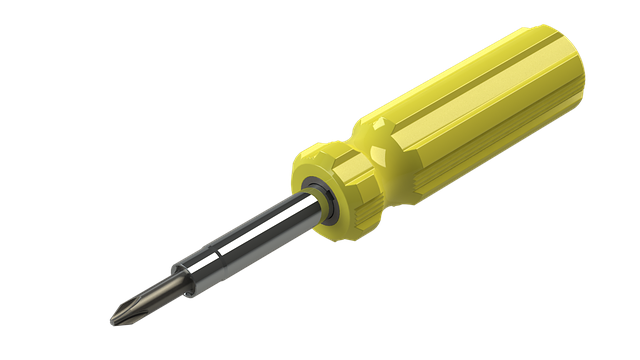The Mercedes sequential turn signal (MSTS) is a safety-critical feature using dynamic light sequences for clear turn indication. Any malfunctions, detected through error codes or irregular blinker patterns, signal potential issues in the control unit, sensors, or wiring. Professional MSTS repair services are vital to address these problems, ensuring precise light synchronization and preventing accidents. This advanced system integrates sensors, electronics, and actuators, making proper repair techniques like paintless dent repair crucial for maintaining both vehicle safety and aesthetics. Regular maintenance, alongside other essential repairs, is key to maximizing the MSTS's role in accident prevention, especially in urban traffic.
Discover the intricacies of your Mercedes’ sequential turn signal system with this comprehensive guide. Mercedes vehicles utilize a sophisticated sequential turn signal functionality, designed to enhance driver safety by providing clear and predictable indicators. This article demystifies the common error codes associated with these signals, offering insights into their meanings and potential causes. Moreover, it includes a practical step-by-step repair process for mechanics, ensuring your Mercedes’ turn signals function flawlessly. Learn how to diagnose and address issues efficiently using our detailed guide on Mercedes sequential turn signal repair.
- Understanding Mercedes Sequential Turn Signal Functionality
- – Explanation of the sequential turn signal system in Mercedes vehicles
- – How the system works and its purpose for driver safety
Understanding Mercedes Sequential Turn Signal Functionality

The Mercedes sequential turn signal is a sophisticated feature designed to enhance safety and visibility while driving. Unlike traditional turn signals that flash in a static pattern, the Mercedes version employs a dynamic sequence, alternating between flashing and solid lights as the driver activates each direction. This innovative system not only reduces blind spot risks but also adds a touch of modern elegance to the vehicle’s exterior. Understanding this functionality is crucial for anyone considering Mercedes sequential turn signal repair.
When operating correctly, the signals should follow a precise pattern, starting from the outside mirrors and moving inwards or vice versa, depending on the direction you intend to turn. Any deviation from this sequence could indicate an issue with the system, potentially impacting driving safety. If you notice anomalies, such as lights not flashing in sync or missing steps in the sequence, it may signal a problem with the turn signal control unit, sensors, or wiring—all of which can be addressed through expert Mercedes sequential turn signal repair services, ensuring your vehicle’s safety and aesthetics remain intact, just like a meticulously executed vehicle body repair or even a carefully executed bumper repair.
– Explanation of the sequential turn signal system in Mercedes vehicles

The Mercedes sequential turn signal system is a sophisticated feature designed to enhance safety and visibility while driving. Unlike traditional turn signals that blink on and off, this system uses a sequential pattern where the turn signal lights move in an arc, indicating a left or right turn with greater precision. This innovative approach not only reduces driver errors but also adds to the overall luxury and advanced technology reputation of Mercedes vehicles. The system is controlled by a complex network of sensors, electronics, and actuators, ensuring smooth and accurate signaling.
Understanding this mechanism is crucial for anyone considering Mercedes sequential turn signal repair. A malfunction can lead to error codes that alert drivers and potentially impact vehicle safety. Common issues include lights not turning on, incorrect blinker patterns, or intermittent signals. Repairs often involve diagnostic scanning to identify the problem, followed by specialized mercedes benz repair techniques, such as paintless dent repair for exterior components, ensuring minimal disruption to the vehicle’s aesthetics and functionality.
– How the system works and its purpose for driver safety

The Mercedes sequential turn signal system is a sophisticated safety feature designed to enhance visibility and prevent accidents. This advanced technology uses a series of flashing lights to indicate a driver’s intentions, providing other road users with crucial information about upcoming turns or lane changes. By replacing the traditional static signals, it offers a more dynamic and efficient warning system. The sequential turn signal repair process is essential for maintaining this safety net, ensuring that each light flickers in a precise, ordered pattern to communicate the driver’s move clearly.
This system plays a vital role in modern vehicle design, particularly as cities become more congested. Unlike traditional signals, which may be obscured by weather conditions or other vehicles, the sequential turn signal’s clear and distinct pattern ensures drivers receive consistent and timely warnings, facilitating safer navigation through complex traffic patterns. Moreover, a well-functioning turn signal system contributes to overall vehicle maintenance, alongside other critical components like auto glass repair, paintless dent repair, and auto frame repair.
The Mercedes sequential turn signal system is a sophisticated feature designed to enhance driver safety by providing clear and distinct indications of intended turns. However, like any complex electrical system, it can encounter errors, leading to diagnostic codes that require attention from skilled technicians. Understanding these error codes, as explained in this article, can facilitate faster and more effective Mercedes sequential turn signal repair, ensuring your vehicle communicates its intentions clearly on the road.














